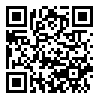Volume 5, Issue 1 (Winter 2025)
J Clin Sport Neuropsychol 2025, 5(1): 1-20 |
Back to browse issues page
Download citation:
BibTeX | RIS | EndNote | Medlars | ProCite | Reference Manager | RefWorks
Send citation to:



BibTeX | RIS | EndNote | Medlars | ProCite | Reference Manager | RefWorks
Send citation to:
Majidifar M, Boroomand M, Fallahirad S, Akbari S. Comparison of Alexithymia and Negative Mood in Adolescent Female Athletes and Non-Athletes. J Clin Sport Neuropsychol 2025; 5 (1) : 1
URL: http://jcsnp.ir/article-1-144-en.html
URL: http://jcsnp.ir/article-1-144-en.html
1- M. Sc. in General Psychology, Karaj Branch, Islamic Azad University, Tehran, Iran
2- M. Sc. in Clinical Psychology, Marvdasht Branch, Islamic Azad University, Tehran, Iran
2- M. Sc. in Clinical Psychology, Marvdasht Branch, Islamic Azad University, Tehran, Iran
Abstract: (824 Views)
Background and Purpose: Physical exercise and activity, as one of the most common activities in today's mechanized world, have been able to positively influence both the physical and mental health of individuals. The present study aimed to compare alexithymia and negative mood between adolescent female athletes and non-athletes.
Method: This study was applied in purpose, quantitative in nature, and causal-comparative in statistical analysis. The study population consisted of adolescent female athletes and non-athletes in Shiraz in 2024, who were active in sports clubs, including bodybuilding, aerobics, tennis, and yoga. The sample included 50 adolescent female athletes and 50 non-athletes, selected through purposive sampling. The measurement tools consisted of two questionnaires: the Negative Mood Scale (Watson et al., 1988) and the Toronto Alexithymia Scale (Taylor & Parker, 1994). The collected data were analyzed using SPSS-28.
Findings: The results showed a significant difference between the two groups in the dimensions of alexithymia, specifically in difficulties identifying emotions and difficulties describing feelings. Based on the descriptive means, it was found that these dimensions were significantly lower in female athletes compared to non-athletes. Additionally, there was a significant difference in negative mood between the two groups, with the descriptive means indicating that negative mood was significantly lower in female athletes compared to non-athletes.
Conclusion: The findings of this study provide strong evidence supporting the positive impact of sports on adolescents' mental health and highlight the need to promote a culture of physical activity in this age group.
Method: This study was applied in purpose, quantitative in nature, and causal-comparative in statistical analysis. The study population consisted of adolescent female athletes and non-athletes in Shiraz in 2024, who were active in sports clubs, including bodybuilding, aerobics, tennis, and yoga. The sample included 50 adolescent female athletes and 50 non-athletes, selected through purposive sampling. The measurement tools consisted of two questionnaires: the Negative Mood Scale (Watson et al., 1988) and the Toronto Alexithymia Scale (Taylor & Parker, 1994). The collected data were analyzed using SPSS-28.
Findings: The results showed a significant difference between the two groups in the dimensions of alexithymia, specifically in difficulties identifying emotions and difficulties describing feelings. Based on the descriptive means, it was found that these dimensions were significantly lower in female athletes compared to non-athletes. Additionally, there was a significant difference in negative mood between the two groups, with the descriptive means indicating that negative mood was significantly lower in female athletes compared to non-athletes.
Conclusion: The findings of this study provide strong evidence supporting the positive impact of sports on adolescents' mental health and highlight the need to promote a culture of physical activity in this age group.
Article number: 1
Type of Study: Research |
Subject:
Clinical Sport Neurpsychology
Received: 2024/07/31 | Accepted: 2024/08/23 | Published: 2025/01/1
Received: 2024/07/31 | Accepted: 2024/08/23 | Published: 2025/01/1
| Rights and permissions | |
 |
This work is licensed under a Creative Commons Attribution-NonCommercial 4.0 International License. |




